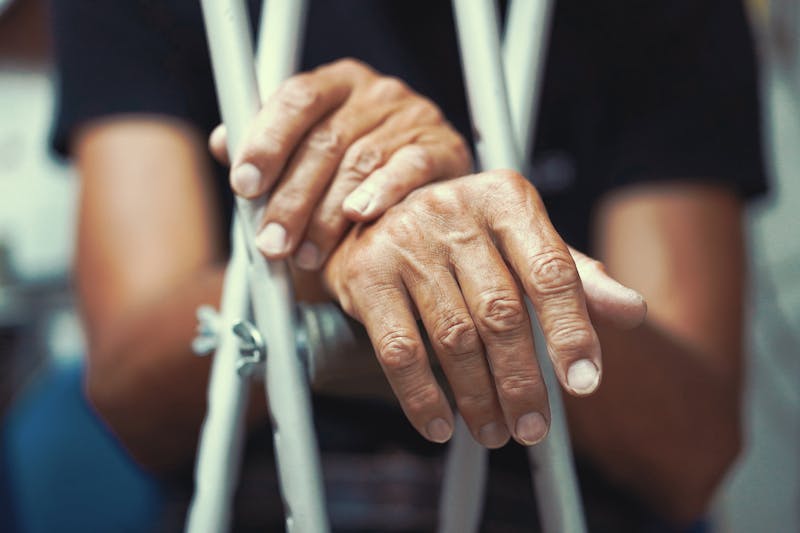
Slip and fall accidents are among the most common causes of personal injury claims in New York. While some cases result in severe injuries requiring surgery, many victims sustain injuries that do not necessitate surgical intervention. Stemming from this, even non-surgical injuries can lead to substantial settlements, depending on factors such as medical costs, lost wages, pain and suffering, and the degree of liability.
Factors Influencing Slip and Fall Settlements Without Surgery
Several key factors determine the settlement value of a slip and fall claim in which the victim does not undergo surgery:
- Severity of the Injury – While surgery increases the value of a case, non-surgical injuries such as sprains, soft tissue damage, and fractures still require medical treatment and can cause long-term pain.
- Medical Expenses – The total cost of emergency room visits, physical therapy, diagnostic tests (x-rays, MRIs), and prescription medications contributes to the settlement amount.
- Lost Wages – If the injury forces the victim to miss work, the lost income will be factored into the settlement.
- Pain and Suffering – The physical and emotional toll of the injury plays a significant role in settlement negotiations.
- Liability and Negligence – Proving the property owner’s actual or constructive negligence is key to securing compensation.
Common Non-Surgical Injuries in Slip and Fall Cases
Non-surgical injuries in slip and fall cases can still be serious and require extensive medical treatment. Some of the most common include:
- Soft Tissue Injuries – Ligament sprains, muscle strains, and contusions often result from falls.
- Whiplash and Neck Injuries – Sudden falls can cause the head to jerk violently, leading to chronic pain and stiffness.
- Fractures and Dislocations – While some fractures heal with casting and do not require surgery, they can still lead to complications.
- Concussions and Mild Traumatic Brain Injuries (TBI) – A head impact during a fall can result in dizziness, headaches, and cognitive difficulties.
- Back and Spinal Injuries – Herniated discs and nerve damage can occur without requiring surgical treatment, but may still cause significant pain.
Average Settlement Amounts for Non-Surgical Slip and Fall Cases
While each case is unique, non-surgical slip and fall settlements in New York typically range between $10,000 and $100,000, depending on the factors mentioned above. Here are some general guidelines:
- Minor injuries (bruises, minor sprains, and strains): Settlements often fall between $10,000 and $25,000.
- Moderate injuries (fractures without surgery, concussions, herniated discs): Compensation may range from $25,000 to $75,000.
- Severe but non-surgical injuries (long-term disability, chronic pain): Cases can settle for $75,000 to $100,000 or more.
How Insurance Companies Evaluate Non-Surgical Slip and Fall Claims
Insurance companies typically assess non-surgical slip and fall cases based on the following criteria:
Medical Records and Treatment
One of the most critical factors in evaluating a non-surgical slip and fall claim is the medical evidence presented. Insurance companies will closely examine emergency room reports, physician notes, diagnostic tests, and any prescribed treatments. They look for consistency in medical visits and adherence to recommended therapies. If there are significant gaps in treatment or inconsistent reporting of symptoms, insurers may argue that the injuries are not as severe as claimed.
Duration of Recovery
The length of time a victim takes to recover plays a key role in determining settlement value. If an injury causes prolonged pain, mobility restrictions, or the need for ongoing physical therapy, the claim will likely be viewed more favorably. Conversely, if medical records indicate that a claimant quickly resumed normal activities, insurance companies may attempt to minimize the payout, asserting that the injury was minor.
Impact on Daily Life
Insurers assess how the injury has disrupted the claimant’s ability to perform daily activities. If a victim is unable to work, complete household chores, or engage in recreational activities due to pain or limited mobility, these limitations add value to the claim. Personal journals, employer statements, and testimony from family members can help establish the extent of the injury’s impact.
Prior Medical History
Insurance companies often scrutinize a claimant’s medical history to determine if pre-existing conditions contributed to the reported injury. If a person had prior back, knee, or joint issues, insurers may argue that the pain or mobility problems are unrelated to the slip and fall. Proper legal representation can help counter these claims by demonstrating how the accident specifically aggravated or worsened a pre-existing condition.
Comparative Negligence
New York follows a pure comparative negligence rule, which means that if the victim is partially at fault for the accident, their compensation may be reduced proportionally. Insurance companies frequently argue that the claimant was distracted, wearing inappropriate footwear, or ignoring warning signs. The burden of proof falls on the claimant to establish that the property owner’s negligence was the primary cause of the fall. A well-documented case, including surveillance footage, witness statements, and expert testimony, can help overcome these challenges.
Maximizing Compensation in a Non-Surgical Slip and Fall Case
To ensure the highest possible settlement, victims should take the following steps:
- Seek Immediate Medical Attention – Prompt medical treatment establishes a record of the injury.
- Follow Doctor’s Recommendations – Adhering to prescribed treatments demonstrates the seriousness of the injury.
- Document Everything – Keep medical bills, lost wage records, and a journal detailing pain levels and daily limitations.
- Consult a Skilled Attorney – An experienced slip and fall lawyer can negotiate aggressively with insurance companies and maximize compensation.
- Avoid Giving Recorded Statements to Insurers – Insurance adjusters may try to minimize claims by twisting statements.
Challenges in Non-Surgical Slip and Fall Claims
While non-surgical injuries are still compensable, insurance companies often attempt to undervalue these claims. Common challenges include:
- Downplaying the Injury – Insurers may argue that the lack of surgery indicates a minor injury.
- Pre-Existing Conditions – Adjusters may claim that previous medical issues contributed to the injury.
- Delays in Seeking Treatment – A delay in medical care can weaken a claim.
- Low Initial Settlement Offers – Many insurers offer unreasonably low settlements in hopes that the victim will accept.
Our NYC Slip and Fall Accident Lawyer will Fight to Maximize Your Settlement
If you have been injured in a slip and fall accident in New York, you need an advocate who will not back down against powerful insurance companies. Michael S. Lamonsoff, known as "The Bull," has built a reputation as one of the fiercest slip and fall injury lawyers in the state. With over 150 years of combined litigation experience and more than $500 million recovered in settlements and verdicts, the Law Offices of Michael S. Lamonsoff, PLLC, knows how to take control of the legal process and fight for the largest possible compensation for your injuries and losses.
Insurance companies thrive on intimidation and lowball offers, but they fear attorneys like Lamonsoff—trial lawyers who are always prepared to take cases to court if necessary. At The Law Offices of Michael S. Lamonsoff, we don’t just negotiate—we dominate. Our aggressive litigation strategy forces insurers to recognize the true value of your claim, ensuring that they offer a settlement that reflects the full extent of your injuries, lost wages, medical expenses, and pain and suffering.
If they refuse, we are ready to take them to trial, where a jury will decide your rightful compensation. Don’t let the insurance companies dictate your future. Reach out to us today and put The Bull in your corner. To schedule your free consultation, call us at 212-962-1020 or fill out this online contact form.


